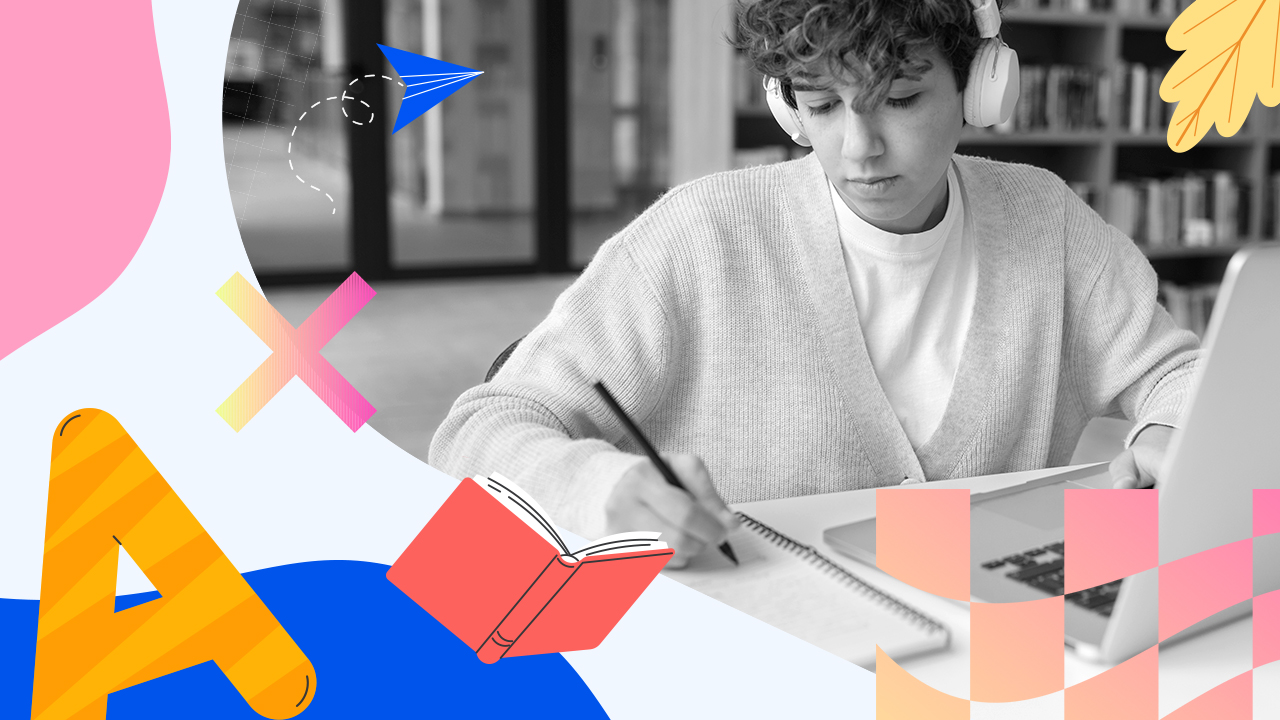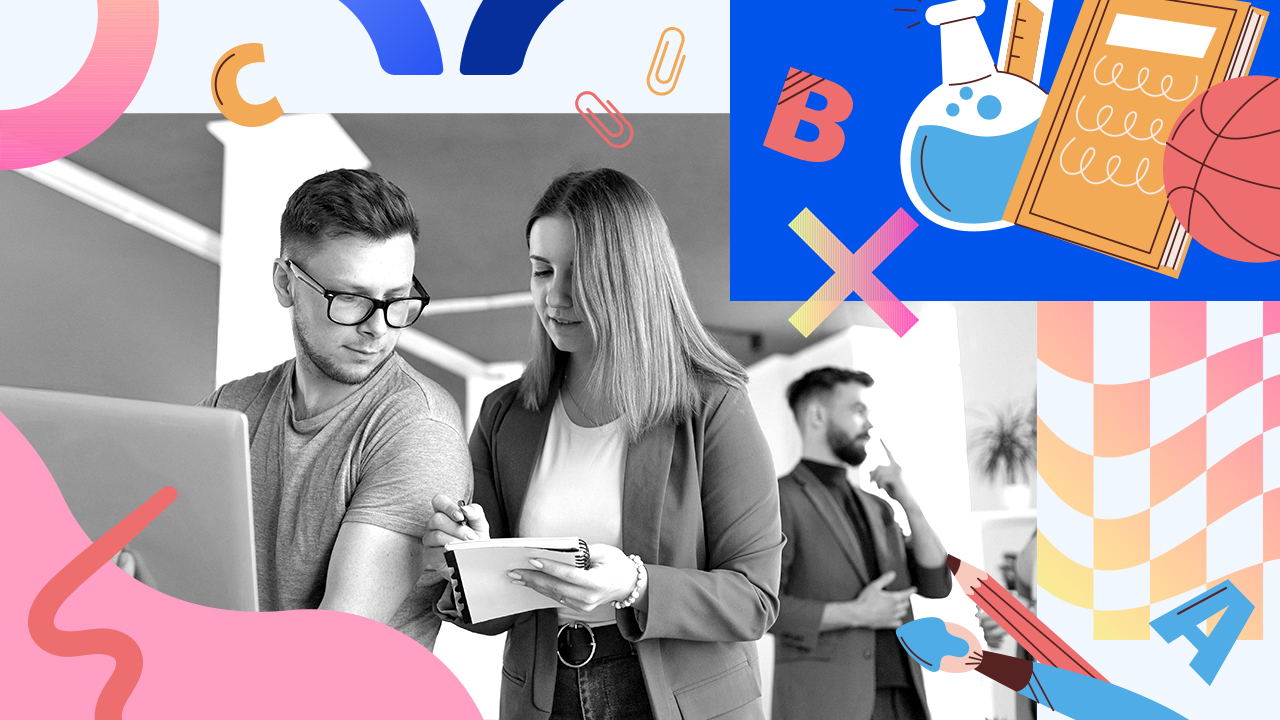Upholding Integrity in Digital Educational Spaces
In the vast expanses of today’s educational environment, digital learning has not merely taken a seat at the table; it has become a cornerstone of the academic experience. As institutions navigate the choppy waters of rapid technological change, academic integrity remains a beacon, guiding the path toward credible and respectable educational outcomes. Yet, in this increasingly digital world, maintaining the sanctity of academic honesty presents unique challenges.
Why is academic integrity so pivotal in education? It is about fostering a culture where knowledge, honesty, and hard work are valued above all. Academic integrity is the foundation upon which learners build their intellectual identity and prepare for future challenges in professional and personal spheres. But as educational resources and interactions migrate online, the lines can blur, making the principles of integrity less clear to students and educators alike.
Understanding Academic Integrity in the Digital Age
The evolution of education from traditional classrooms to digital platforms demands a greater understanding and fresh dedication to its core values: honesty, trust, fairness, respect, accountability, and courage. These principles are ethical imperatives and critical to a student’s academic and professional development. They create a climate in which true learning and reputable scholarship can flourish.
Challenges in maintaining academic integrity are particularly pronounced in digital learning environments. The vast material availability can sometimes obscure the distinction between study and plagiarism. Tools and technologies for information sharing could be used to undermine scholarly initiatives. For example, the anonymity provided by online platforms may encourage students to engage in dishonest behavior, believing they are less likely to be caught. Furthermore, physical separation between students and professors can lead to misunderstandings about originality requirements and proper source attribution.
EduLegit.com provides a robust solution to these challenges by offering a comprehensive suite of tools to maintain academic integrity in digital learning environments. With advanced monitoring systems that track student activities during exams and assignments, EduLegit ensures that students remain focused and engaged, reducing the temptation to engage in dishonest behavior. Additionally, EduLegit’s plagiarism detection tools help students and educators identify and avoid unintentional plagiarism, thereby upholding the principles of originality and academic honesty.
The obstacles are technological, psychological and cultural. Some students may feel detached while not in a physical classroom, leading them to believe that the rules are different or can be bent. Additionally, with the rise of contract cheating services and peer-to-peer file-sharing networks, students can readily avoid traditional means of academic assessment.
Technological Tools to Enforce Integrity
In the digital domain, technology is both a medium for instruction and a critical ally in upholding academic integrity. Creating and implementing specialized instruments meant to detect and deter academic dishonesty is critical to ensuring the integrity of academic work. These solutions, which include plagiarism detection software and sophisticated online proctoring systems, help to bridge the gap between traditional integrity standards and modern educational procedures.
Plagiarism Detection Software
Plagiarism detection software like Turnitin and Grammarly is widely used in education to deter and identify academic dishonesty. These tools compare student submissions against a vast database to spot overlaps indicating plagiarism. However, they aren’t foolproof, as sophisticated methods like paraphrasing or paid services can evade detection. To be truly effective, these tools should be complemented by education on the importance of originality and proper citation practices, aiming to foster a deeper understanding of academic ethics.
Proctoring Solutions
With the rise of online exams, digital proctoring has become crucial. This method uses video monitoring and browser lockdowns to prevent cheating. However, these technologies raise privacy concerns due to their invasive nature. Balancing academic integrity with student privacy requires transparent processes that protect students’ rights while upholding academic standards.
Educational Strategies and Policies
While technology provides valuable tools for maintaining academic integrity, effective instructional practices and strong policy frameworks lay the groundwork for a culture of honesty. These factors work together to build a strong awareness and regard for academic integrity in both students and educators.
- Developing a Culture of Honesty
Educators are important in creating an environment that values and practices integrity. This is more than simply teaching the rules; it also entails modeling the behaviors and ethical standards expected of pupils. Educators may foster this culture by openly emphasizing the value of academic integrity in their classes, sharing personal tales highlighting the consequences of ethical decisions, and providing clear examples of ethical and unethical behavior.
Furthermore, incorporating debates on integrity into the curriculum across disciplines might reinforce its relevance by showing students that these principles apply not only in academic settings but also in professional and personal life. Workshops, seminars, and even online courses on academic integrity can help students comprehend and connect with the topic.
- Policy Frameworks
Strong institutional policies are essential for promoting academic honesty. These policies must be clear, thorough, and easily available to all students and employees. They should define academic dishonesty and the repercussions of such activities and ensure that penalties are reasonable and consistent.
Effective academic integrity policies are frequently developed with feedback from the academic community, including students. This participatory approach promotes policy relevance and justice while also increasing community buy-in. Once developed, these regulations should be publicly displayed in course syllabi, the institution’s website, and student handbooks. Regular training sessions and educational campaigns can help keep academic integrity at the top of institutional minds.
In addition to establishing policies, schools must provide enough support for students who may face academic pressures that lead to dishonesty. Counseling services, tutoring programs, and writing centers can provide the assistance required to help kids succeed honestly and with integrity.
The Role of Individual Responsibility and Ethical Conduct
While institutional tactics and technologies play important roles in maintaining academic integrity, genuine intellectual honesty is founded on individual accountability and ethical behavior. Personal dedication to honesty eventually affects the ethical landscape of any academic institution.
Personal Accountability in Learning
Developing personal accountability in students ensures that academic integrity values are understood and applied. Educators and institutions can promote this by fostering situations where students are expected to take responsibility for their learning and conduct. This includes educating students on the implications of academic dishonesty for their grades, overall character, and future professional life.
It can be beneficial to use reflective tasks that require students to consider what integrity means to them and how it affects their academic and professional goals. Such exercises emphasize the necessity of ethical behavior while also making the concept of integrity more personal. Furthermore, encouraging students to engage in conversations and debates about ethical concerns can help them negotiate complex moral landscapes in academia and beyond.
Case Studies
Four students enrolled in a mid-sized university’s advanced business ethics course encountered a huge obstacle during their final semester project. The assignment requires the group to study a recent corporate crisis, discuss ethical shortcomings, and propose preventative measures for future recurrence. The students were expected to use various sources, synthesize their findings, and offer a cohesive analysis in both written and presentation modes.
Dilemma:
As the deadline came, one of the group members, Alex, uncovered an in-depth analysis online that closely matched their assigned topic. The material was sourced from an unnamed company insider’s extensive blog post rather than an academic publication. Alex offered that the group paraphrase the blog post, claiming it gave more insight than their existing resources. Alex assumed that because the blog was relatively unknown and the ideas had not been published in any academic or professional publications, the danger of being found for plagiarism was low.
Group Response:
The suggestion provoked an immediate division in the group. Jamie, another group member, was uncomfortable with the notion. Jamie contended that using the blog post without proper attribution exceeded ethical lines and violated the course’s academic integrity standard, which states unequivocally that all sources must be properly cited and original analysis is vital. However, two other group members, Casey and Taylor, supported Alex, citing the approaching deadline and their view that paraphrasing the blog would save time and add depth to their effort.
Faculty Intervention:
Jamie, unsure of how to continue, approached the course teacher anonymously for help without expressly naming any group members. The lecturer underlined the importance of academic integrity, reminding Jamie that it is more than just following regulations; it is also about adopting an ethical position that values the intellectual contributions of others.
Outcome:
Jamie returned to the group with a new perspective, calling for a further meeting to explore the issue. During the meeting, the group critically considered the ethical consequences of their decisions. They chose to use the blog as a starting point for additional research, but they also promised to perform their analysis and openly cite all of their sources, including the blog.
Reflection:
This move required the group to devote more time and effort to their research, but it eventually improved their analysis and ensured that they followed the course’s ethical criteria. Their final presentation was well received, and their instructor praised them for their extensive study and ethical decision-making process.
Discussion Points:
- What are the immediate and long-term implications of paraphrasing a blog without adequate citation?
- How does peer pressure affect ethical decision-making in group settings?
- What techniques may academic institutions use to establish an environment in which academic integrity is prioritized?
This case study is a teaching tool for discussing the complexities of academic integrity, peer influence, and ethical decision-making in academic cooperation. It emphasizes the significance of individual responsibility and the impact of ethical decisions on one’s academic and professional standing.
Fostering Collaboration While Ensuring Integrity
Collaborative work in academic contexts provides students with numerous benefits, including the opportunity to engage with other perspectives, improve communication skills, and develop critical thinking abilities. However, collaboration creates distinct issues in sustaining academic integrity, particularly in digital environments where monitoring and responsibility can be more complex.
Balancing Collaboration and Individual Work
To establish a healthy environment for cooperation while maintaining academic integrity, instructors must clearly define what constitutes appropriate collaborative activity and what does not. Clear norms should be created for accessing shared resources, dividing work, and making individual contributions to collective duties. Educators can help by creating assignments that require specific contributions from each group member and can be scored separately. For example, in a group assignment, each student may be assigned to write a piece that reflects their research and analysis and a collective discussion or conclusion.
Creating procedures inside collaborative projects that promote transparency among group members can also help maintain integrity. This could include periodic peer evaluations inside the group, in which members comment on each other’s work. This would guarantee that all aspects of the project match academic standards and are unique works by the group members.
Innovative Practices
Technology can play an important role in facilitating collaborative work while maintaining integrity. Digital tools that track changes and contributions (such as version history in Google Docs or collaborative coding platforms like GitHub) enable instructors to identify who made what contributions to a project. This discourages dishonest behavior and encourages all group members to contribute fully and fairly.
Another new strategy is to have students write reflection essays or process papers outlining their involvement in the project and reflecting on their learning and contributions. This encourages students to engage more deeply with the content and allows professors to examine the collaborative process’s integrity.
Structured peer-assessment techniques can also be beneficial in encouraging honesty and accountability. Students hold each other accountable by assessing one another’s contributions using set criteria, building a group dynamic emphasizing integrity.
To summarize, while digital learning platforms have revolutionized the educational landscape, they need us to reconsider and reinforce how we teach, learn, and cooperate. Ensuring academic integrity in the digital age entails following the rules and fully embedding these principles in our educational activities and relationships. By creating conditions encouraging collaboration and individual accountability, we may help design a future in which academic integrity is still a basic education foundation.


Can AI Assess Essay Samples Fairly?
Artificial intelligence (AI) is a technological breakthrough across various spheres, including education. Yet, its role is still uncertain for people […]

AI in Education: EduLegit’s Role in Shaping Honest Digital Learning
The search for optimizing the educational process and making studies more engaging and effective for students and educators allowed AI […]

AI Ethics in Education: Balancing Innovation with Responsibility
The discussion surrounding AI ethics dates back more than 70 years, with Isaac Asimov introducing the “three laws of robotics.” […]










